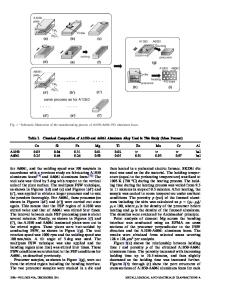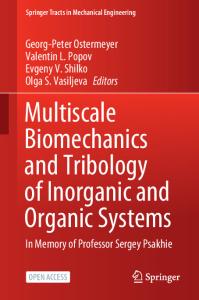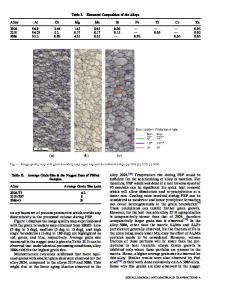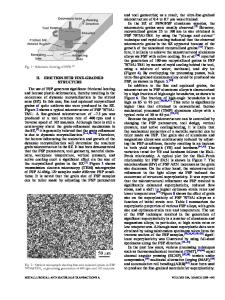Fabrication of Porous Aluminum by Friction Stir Processing
- PDF / 211,536 Bytes
- 3 Pages / 593.972 x 792 pts Page_size
- 52 Downloads / 315 Views
orous aluminum is a lightweight material with high specific strength as well as high mechanical damping reduction ability. Therefore, porous aluminum is expected to be used for various applications, in the automotive industry, aerospace industry, and building industry.[1,2] There are various methods of manufacturing porous aluminum. One of the major processes used to manufacture closed-cell porous aluminum is to use a precursor.[1] This production process begins with the mixing of aluminum alloy and a blowing agent to produce a foamable aluminum precursor. Next, heat treatment at a temperature near the melting point of the alloy is conducted to decompose the blowing agent. The released gas expands the foamable aluminum to produce closed-cell porous aluminum. Typical methods of producing the foamable precursor are a powder compact foaming technique[3–5] and an accumulative roll-bonding process.[6,7] The powder compact foaming technique consists of mixing the aluminum alloy powder with the blowing agent and compacting the mixture to produce a dense precursor. Although this technique allows the formation of near-net-shaped parts, aluminum powder is relatively expensive. Also, the mixing and compacting of the aluminum powder is a time-consuming process with high energy consumption. The accumulative rollbonding process consists of roll bonding two bulk aluminum sheets stacked with blowing agent powder. YOSHIHIKO HANGAI, Assistant Professor, is with the Department of Mechanical System Engineering, Gunma University, Kiryuu 376-8515, Japan. Contact e-mail: [email protected] TAKAO UTSUNOMIYA, Professor, is with the Research Organization of Advanced Engineering, Shibaura Institute of Technology, Saitama 337-8570, Japan. Manuscript submitted September 25, 2008. Article published online December 17, 2008 METALLURGICAL AND MATERIALS TRANSACTIONS A
The bonded sheets are cut into two and are stacked for the next roll bonding. By repeating this cycle several times, a foamable preform is produced. Although this technique uses inexpensive bulk aluminum sheets as a starting material, accumulative roll-bonding requires time-consuming preprocessing with high energy consumption to obtain the bonded aluminum sheets with a uniform distribution of the blowing agent. Friction stir processing (FSP)[8,9] is a solid-state process used to generate friction heat and intense plastic deformation by inserting and traversing a rotating tool with a probe and a shoulder through the base metal. The FSP has been used for fabricating metal matrix composites such as aluminum alloys and magnesium alloys with uniformly dispersed ceramic particles owing to its high mixing ability.[10–12] The FSP is a simple process with an extremely short processing time, i.e., the time required for the tool to traverse through the material without deleterious gas and noise. Also, FSP does not require inconvenient heating processes with high energy consumption before processing. It is expected that the FSP technique has the potential to be used for fabricating a foamable
Data Loading...











